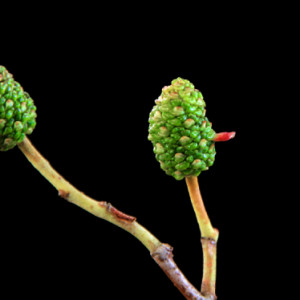galls
I am a bit of a martyr when it comes to insect bites and spend much of the summer sporting an unsightly assemblage of red bumps. However my reaction is pretty mundane compared to the spectacular response of many plants.
This sad Amphibious Bistort has been attacked by the gall midge Wachtliella persicariae. The midges overwinter as pupae in the soil and the adults emerge in the spring and lay eggs on the folds of immature leaves. The eggs take 2-10 days to hatch into larvae that begin feeding on the leaves. The leaf margins respond by become tightly curled into distorted tubes, which turn red, then brown and brittle. The larvae continue to feed and grow within the tubes and eventually drop off into the soil where they pupate.
Extra. Yesterday AJC posted a wonderful photograph of another plant gall, the alder tongue. This gall develops on the maturing female catkins of alders in response to infection by the fungus Taphrina alni. I had never seen these galls and so this afternoon I went in search of them and was successful! Not as spectacular as AJC's offering but good to find.


Comments
Sign in or get an account to comment.


